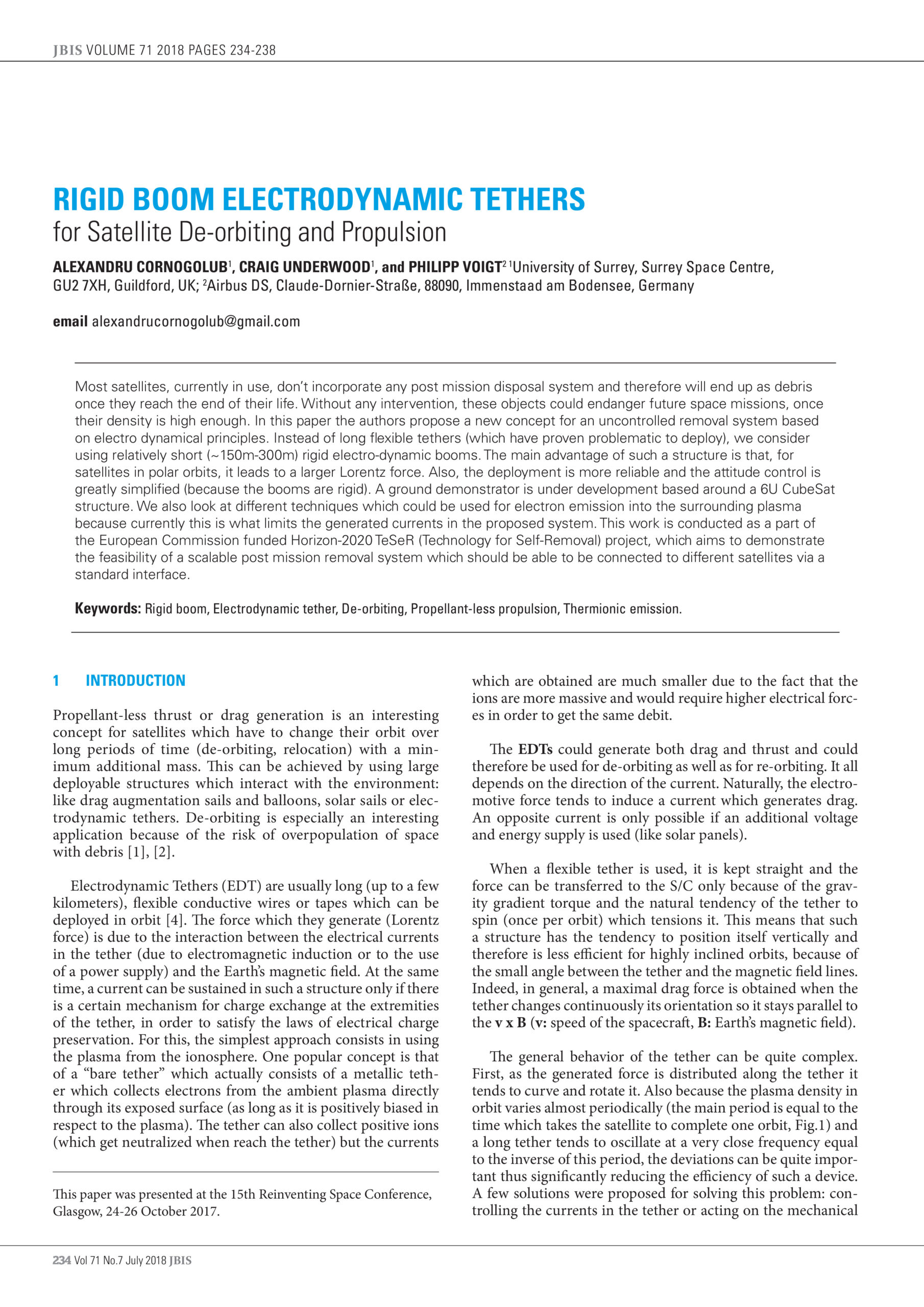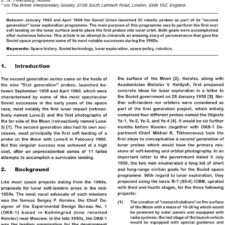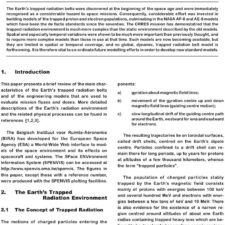Rigid Boom Electrodynamic Tethers for Satellite De-orbiting and Propulsion
£5.00
A. Cornogolub et al. (2018), JBIS, 71, pp.234-238
Refcode: 2018.71.234
Keywords: Rigid boom, Electrodynamic tether, De-orbiting, Propellant-less propulsion, Thermionic emission.
Abstract:
Most satellites, currently in use, don’t incorporate any post mission disposal system and therefore will end up as debris once they reach the end of their life. Without any intervention, these objects could endanger future space missions, once their density is high enough. In this paper the authors propose a new concept for an uncontrolled removal system based on electro dynamical principles. Instead of long flexible tethers (which have proven problematic to deploy), we consider using relatively short (~150m-300m) rigid electro-dynamic booms. The main advantage of such a structure is that, for satellites in polar orbits, it leads to a larger Lorentz force. Also, the deployment is more reliable and the attitude control is greatly simplified (because the booms are rigid). A ground demonstrator is under development based around a 6U CubeSat structure. We also look at different techniques which could be used for electron emission into the surrounding plasma because currently this is what limits the generated currents in the proposed system. This work is conducted as a part of the European Commission funded Horizon-2020 TeSeR (Technology for Self-Removal) project, which aims to demonstrate the feasibility of a scalable post mission removal system which should be able to be connected to different satellites via a standard interface.





